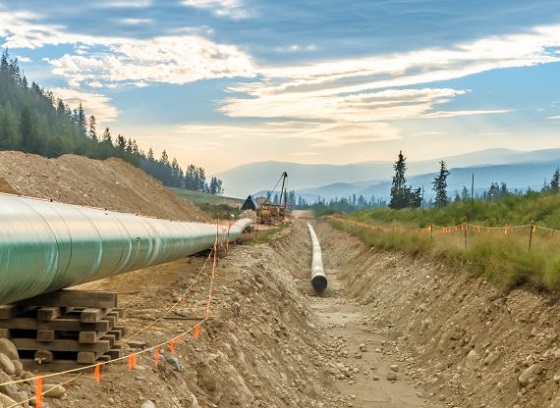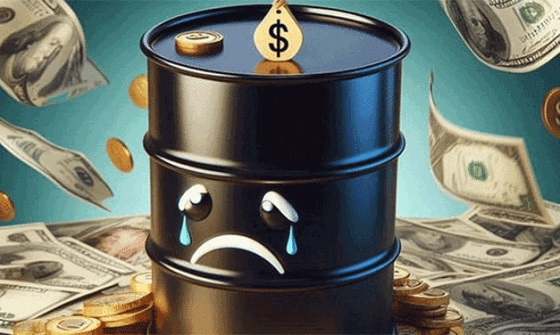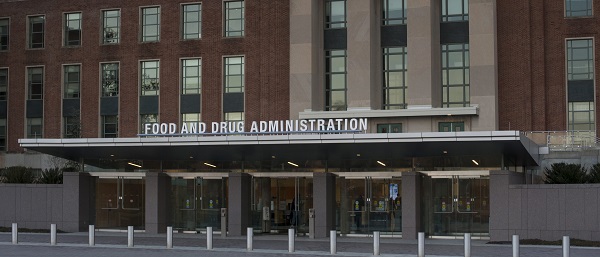Energy
Jagmeet Singh’s mythematical numbers

From Resource Works
Singh… somehow has failed to correct his original post.
National NDP leader Jagmeet Singh earns a new mark for his business mathematics — though his subject is better called “mythematics.” He gets an F for his declaration that Cenovus Energy had record profits of $37 billion in 2023.
He began with this post on X (Twitter): “Last year, Cenovus raked in $37 billion in profits. And a whopping $64 billion in 2022. Big Oil is making record profits, burning the planet AND asking for massive public handouts. It’s time to end the free ride for oil and gas.”
Readers quickly hit back: “Per Cenovus’ own 2023 Financial Year report, profits were $4.11 billion CAD, down 36% from 2022. Mr. Singh conflates revenue (which includes no expenses, government fees, or taxes) with profit.”
Some pointed to Cenovus’s own figures:
Revenue: CA$52.2b (down 22% from FY 2022)
Net income: CA$4.11b (down 36% from FY 2022)
Profit margin: 7.9% (down from 9.6% in FY 2022)
Heather Exner-Pirot of the Macdonald-Laurier Institute, and special adviser to the Business Council of Canada, added: “Not sure why Singh would just make up numbers? Anyone can look up their annual financial results. There was no $37 billion in profits. Although if they did have that kind of year, it would be great for Albertan royalties and Canadian business taxes.”
She included a link to Cenovus’s 2023 annual report. Singh, though, somehow has failed to correct his original post.
The NDP leader’s earnings from Parliament now run at $271,700 a year. But under his strange “mythematics,” as applied to Cenovus, he presumably has no expenses and pays no taxes, so that $271,700 is all “profit.” Nice…
Pity that the average Canadian, whose gross income in 2023 was $64,850, has to pay out living expenses such as accommodation, food, and taxes to assorted governments. That’s realistic mathematics, not mythematics.
And that average Canadian does not have Parliament to pick up such expenses as Singh racked up from April 1 to June 30: travel, $28,304; hospitality, $3,319; and contract, $38,053.
In his support for the Trudeau Liberal government, we see Singh’s “mythematics” at work again. As the small-c conservative Fraser Institute points out: the Trudeau government’s recent fiscal record includes unprecedented levels of spending and debt.
“The Trudeau government has consistently spent at record-high levels before, during, and after COVID. In fact, Prime Minister Trudeau is on track to record the seven-highest years of per-person spending in Canadian history between 2018 and 2024. Inflation-adjusted spending (excluding debt interest costs) is expected to reach $11,856 per person this year—10.2% higher than during the 2008-09 financial crisis and 28.7% higher than during the peak of the Second World War.
“Consequently, the Trudeau government has posted 10 consecutive deficits since taking office. The projected deficit in 2024/25 is a whopping $39.8 billion. This string of deficits has spurred a dramatic increase in federal debt. From 2014/15 (Prime Minister Harper’s last full year), total federal debt is expected to have nearly doubled to $2.1 trillion. To make matters worse, the government plans to run more deficits until at least 2028/29, and total debt could rise by an additional $400.1 billion by March 2029.
“Indeed, due to reckless decisions, the Trudeau government is on track to record the five-highest years of per-person debt (inflation-adjusted) in Canadian history between 2020 and 2024. As of 2024, Ottawa’s debt equals $51,467 per Canadian—12.3% more than in 1995 when Canada reached a near-debt crisis.”
The New Democrats back the Liberals on confidence and budgetary votes in Parliament, in exchange for concessions on key political priorities. When it came to the current budget, the government included things Singh’s NDP supports, such as funding for pharmacare and a national school lunch program.
But Singh withheld support for the budget for two weeks, saying it didn’t provide adequate funding for a new disability benefit or for Indigenous communities. In the end, he did vote for the budget, and thus those fiscal issues raised by the Fraser Institute. Singh did not disclose if he has been offered Liberal solutions down the road to his concerns.
All a question of “mythematics,” we assume.
Energy
75 per cent of Canadians support the construction of new pipelines to the East Coast and British Columbia

-
71 per cent of Canadians find the approval process too long.
-
67 per cent of Quebecers support the Marinvest Energy natural gas project.
“While there has always been a clear majority of Canadians supporting the development of new pipelines, it seems that the trade dispute has helped firm up this support,” says Gabriel Giguère, senior policy analyst at the MEI. “From coast to coast, Canadians appreciate the importance of the energy industry to our prosperity.”
Three-quarters of Canadians support constructing new pipelines to ports in Eastern Canada or British Columbia in order to diversify our export markets for oil and gas.
This proportion is 14 percentage points higher than it was last year, with the “strongly agree” category accounting for almost all of the increase.
For its part, Marinvest Energy’s natural gas pipeline and liquefaction plant project, in Quebec’s North Shore region, is supported by 67 per cent of Quebecers polled, who see it as a way to reduce European dependence on Russian natural gas.
Moreover, 54 per cent of Quebecers now say they support the development of the province’s own oil resources. This represents a six-point increase over last year.
“This year again, we see that this preconceived notion according to which Quebecers oppose energy development is false,” says Mr. Giguère. “Quebecers’ increased support for pipeline projects should signal to politicians that there is social acceptability, whatever certain lobby groups might think.”
It is also the case that seven in ten Canadians (71 per cent) think the approval process for major projects, including environmental assessments, is too long and should be reformed. In Quebec, 63 per cent are of this opinion.
The federal Bill C-5 and Quebec Bill 5 seem to respond to these concerns by trying to accelerate the approval of certain large projects selected by governments.
In July, the MEI recommended a revision of the assessment process in order to make it swift by default instead of creating a way to bypass it as Bill C-5 and Bill 5 do.
“Canadians understand that the burdensome assessment process undermines our prosperity and the creation of good, well-paid jobs,” says Mr. Giguère. “While the recent bills to accelerate projects of national interest are a step in the right direction, it would be better simply to reform the assessment process so that it works, rather than creating a workaround.”
A sample of 1,159 Canadians aged 18 and older were surveyed between November 27 and December 2, 2025. The results are accurate to within ± 3.5 percentage points, 19 times out of 20.
Business
Geopolitics no longer drives oil prices the way it used to

This article supplied by Troy Media.
Oil markets are shrugging off war and sanctions, a sign that oversupply now matters more than disruption
Oil producers hoping geopolitics would lift prices are running into a harsh reality. Markets are brushing off wars and sanctions as traders focus instead on expectations of a deep and persistent oil glut.
That shift was evident last week. Despite several geopolitical developments that would once have pushed prices higher, including the U.S. seizure of a Venezuelan crude tanker and fresh Ukrainian strikes on Russian energy infrastructure, oil markets barely reacted, with prices ending the week lower.
Brent crude settled Friday at US$61.12 a barrel and U.S. West Texas Intermediate at US$57.44, capping a weekly drop of more than four per cent.
Instead of responding to disruption headlines, markets were reacting to a different risk. Bearish sentiment, rather than geopolitics, continued to dominate as expectations of a “2026 glut” took centre stage.
At the heart of that outlook is a growing supply overhang. The oil market is grappling with whether sanctioned Russian and Iranian cargoes should still be counted as supply. That uncertainty helps explain why prices have been slow to react to a glut that is already forming on the water, said Carol Ryan, writing for The Wall Street Journal.
The scale of that buildup is significant. There are 1.4 billion barrels of oil “on the water,” 24 per cent higher than the average for this time of year between 2016 and 2024, according to oil analytics firm Vortexa. These figures capture shipments still in transit or cargoes that have yet to find a buyer, a clear sign that supply is running ahead of immediate demand.
Official forecasts have reinforced that view. Last week, the International Energy Agency trimmed its projected 2026 surplus to 3.84 million barrels per day, down from 4.09 million barrels per day projected previously. Even so, the IEA still sees a large oversupply relative to global demand.
Demand growth offers little relief. The IEA expects growth of 830 kb/d (thousand barrels per day) in 2025 and 860 kb/d in 2026, with petrochemical feedstocks accounting for a larger share of incremental demand. That pace remains modest against the volume of supply coming to market.
OPEC, however, has offered a different assessment. In its latest report, the group pointed to a near balance, forecasting demand for OPEC+ crude averaging about 43 million barrels per day in 2026, roughly in line with what it produced in November.
Reflecting that confidence. OPEC+ kept policy steady late in November, pausing planned output hikes for the first quarter of 2026 while more than three million barrels per day of cuts remain in place. Those measures are supportive in theory, but markets have shown little sign of being persuaded.
Recent geopolitical events underline that scepticism. The ongoing Russia-Ukraine war and Ukrainian strikes on Russian energy infrastructure, including reported hits on facilities such as the Slavneft-YANOS refinery in Yaroslavl, again failed to lift prices. Russia-Ukraine headlines pulled prices down more than strikes lifted them, according to media reports, suggesting traders were more attuned to “peace deal” risk than to supply disruption.
Washington’s move against Venezuelan crude shipments offered another test. The U.S. seizure of a Venezuelan tanker, the first formal seizure under the 2019 sanctions framework, had a muted price impact, writes Marcin Frackiewicz of Oilprice.com.
Venezuela’s exports fell sharply in the days that followed, but markets remained largely unmoved. One explanation is that Venezuela’s output is no longer large enough to tighten global balances the way it once did, and that abundant global supply has reduced the geopolitical premium.
Taken together, the signal is hard to miss. Oil producers, including in Canada, face a reality check in a market that no longer rewards headlines, only discipline and demand.
Toronto-based Rashid Husain Syed is a highly regarded analyst specializing in energy and politics, particularly in the Middle East. In addition to his contributions to local and international newspapers, Rashid frequently lends his expertise as a speaker at global conferences. Organizations such as the Department of Energy in Washington and the International Energy Agency in Paris have sought his insights on global energy matters.
Troy Media empowers Canadian community news outlets by providing independent, insightful analysis and commentary. Our mission is to support local media in helping Canadians stay informed and engaged by delivering reliable content that strengthens community connections and deepens understanding across the country.
-

 Business24 hours ago
Business24 hours agoGeopolitics no longer drives oil prices the way it used to
-

 Business23 hours ago
Business23 hours agoArgentina’s Milei delivers results free-market critics said wouldn’t work
-

 Alberta2 days ago
Alberta2 days agoAlberta’s new diagnostic policy appears to meet standard for Canada Health Act compliance
-

 Health2 days ago
Health2 days agoRFK Jr reversing Biden-era policies on gender transition care for minors
-

 Censorship Industrial Complex1 day ago
Censorship Industrial Complex1 day agoCanadian university censors free speech advocate who spoke out against Indigenous ‘mass grave’ hoax
-

 Business23 hours ago
Business23 hours agoDeadlocked Jury Zeroes In on Alleged US$40 Million PPE Fraud in Linda Sun PRC Influence Case
-

 Daily Caller1 day ago
Daily Caller1 day agoEx-FDA Commissioners Against Higher Vaccine Standards Took $6 Million From COVID Vaccine Makers
-

 COVID-191 day ago
COVID-191 day agoFreedom Convoy protester appeals after judge dismissed challenge to frozen bank accounts











